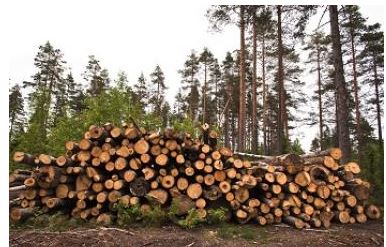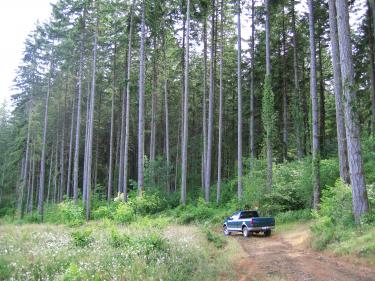How to
Sell Your Timber
If you’ve sold a house, a car, or any
other piece of property, then you know that selling can be tricky. From
finding a buyer to filling out the right paperwork, there are lots of little
steps to keep track of throughout the selling process.
process.
Selling timber is like that too—there are
several steps to the process, many of which may be new to you.
If you’ve decided to harvest and sell some of your timber, here’s what you
need to do:
Step 1: Get helP
Finding the right consulting forester to help you through the selling
process can make your timber sale easier and more profitable. Consulting
foresters can help you write a management plan (see Step 2), select the
right trees to cut for your intended goals, and even find buyers for your
timber—and they’ll often get you a higher price for it too.
Step 2: Get a plaN
A written forest management plan describes your woods, your goals for their
management and development over time, and the steps you need to take to
reach those goals. Having a plan can help you decide the details of your
harvest—where, how, which trees, etc.—and your steps after the timber sale.
Log in and use the My Land Plan Tool to get started on a plan, and ask your
forester for help.
Step 3: Get to know your timber
Your timber’s value is based on all kinds of things: what kinds of trees you
have, how large and healthy they are, how many you have, whether they’re easy to reach and cut, and what the
market conditions are. Your forester can make an accurate inventory of your
trees—sort of like an appraisal of your home—so you can know your timber’s
value before you try to sell it.
how many you have, whether they’re easy to reach and cut, and what the
market conditions are. Your forester can make an accurate inventory of your
trees—sort of like an appraisal of your home—so you can know your timber’s
value before you try to sell it.
Step 4: Set your limits
You’ll need to set some boundaries before you set out to sell. The physical
boundaries include the edges and corners of your woods. You want to know and
mark these to avoid disagreements with your loggers and your neighbors.
You’ll also need to decide what you want to protect. Do you want the loggers
to follow certain rules? Do you want them to use existing roads or build new
ones? Are there special places in your woods that you don’t want disturbed?
Figure out what restrictions you need to protect the health of your woods
before you proceed.
Step 5: Find your buyers
To get the best possible price for your timber, you’ll want to have several
competing bids. Create a timber sale notice for a list of reputable buyers
(your forester can provide one), or place an ad on website or in a local newspaper
inviting buyers to contact you for details. Wherever you advertise, include
your contact information, the location of your land, the timber species,
quality and volume you’re selling, the road quality to access the trees, and
any other helpful or important points.
Step 6: Start selling
Once you’ve got interested buyers, there are a few different ways the sale
process can go. You can sell through an “oral auction” where several buyers
attend and verbally bid on the trees, or you can request “sealed bids” that
allow you to compare several different offers on sale day. In the sealed bid
method, buyers get a period of time (usually 4-6 weeks) to inspect the
timber and mail you written bids. All the bids are then opened on the day of
the sale.
Step 7: Put it in writing
Once you’ve chosen the winning bid, you will need to have a written, signed
contract that describes what you and the buyer have agreed to, what
everyone’s responsibilities are, and how payment will be made. The contract
protects you. Learn more about your timber sale contract here.
Step 8: Check in on harvest day
Before the harvesting begins, review your contract with the loggers so
everyone is aware of the property boundaries and the practices you expect
them to follow. Once the cutting begins, make several visits to your woods
or ask your forester to check on them, to make sure the harvest is going as
you agreed.
Fundamentally, steps 1 through 8 are all about being prepared and informed.
And there’s one area where being informed can be very important for your
bottom line: knowing the value of your trees.
More Tips :
Managing a Successful, Sustainable Timber Harvest |

